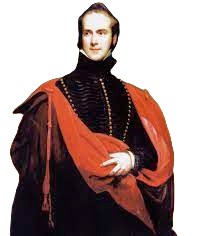In the annals of British history, the name Grosvenor stands tall, synonymous with aristocracy, wealth, and a profound impact on society. At the helm of this prestigious lineage was the esteemed figure of Robert Grosvenor, the first Earl Grosvenor, whose life and contributions left an indelible mark on the socio-economic landscape of 18th-century Britain.
Born on March 22, 1695, Robert Grosvenor hailed from a family with a rich mercantile background. His grandfather, Sir Thomas Grosvenor, had amassed substantial wealth through the burgeoning trade and commerce of the time. However, it was Robert who would elevate the family’s standing by navigating the intricate web of politics, commerce, and societal obligations.
At the core of Robert Grosvenor’s accomplishments was his adeptness in managing the family’s extensive estates. His shrewd business acumen allowed him not only to preserve the family’s wealth but also to enhance it significantly. The Grosvenor estates, centered in and around London, became a testament to the family’s prosperity and influence. Grosvenor Square, the centerpiece of Mayfair, bears witness to the enduring legacy of the Grosvenor family’s astute land management.
The political arena was another sphere where the first Earl Grosvenor left an indelible mark. He served as a Member of Parliament for Chester, representing the family’s ancestral seat. His political career was characterized by a steadfast commitment to the Whig party, aligning himself with the political ideals of constitutional monarchy and parliamentary supremacy. Grosvenor’s contributions were not limited to mere party politics; he played a pivotal role in shaping policies that aimed at fostering economic growth and stability.
Grosvenor’s commitment to public service extended beyond the political realm. He championed philanthropic endeavors, contributing to the betterment of society. His support for charitable causes, including the establishment of schools and hospitals, reflected a genuine concern for the welfare of the less fortunate. His philanthropic legacy endured through successive generations of the Grosvenor family, reinforcing the notion that wealth and privilege should be accompanied by a sense of social responsibility.
The architectural landscape of London bears the imprint of the first Earl Grosvenor’s vision. As a patron of the arts, he supported the work of eminent architects of his time. The Grosvenor family’s influence in the development of Mayfair and Belgravia is a testament to their commitment to urban planning and architectural excellence. The Grosvenor Estate, under Robert’s guidance, became synonymous with elegant town planning and sophisticated urban design.
Despite his wealth and influence, the first Earl Grosvenor was not immune to personal tragedy. The loss of his first wife, Mary Davis, in 1732, was a profound blow that left an enduring impact on him. However, he remarried, and his second marriage to Henrietta Vernon brought stability and happiness to his personal life.
In assessing the legacy of the first Earl Grosvenor, it is crucial to acknowledge his role as a steward of progress. His contributions transcended the accumulation of wealth and titles; he was a catalyst for positive change in a society undergoing profound transformations. From politics to philanthropy, from urban planning to the arts, Robert Grosvenor’s influence reached far and wide, leaving an enduring legacy that continues to shape the fabric of British society.
As we reflect on the life of the first Earl Grosvenor, we are reminded that true greatness lies not just in personal achievements but in the positive impact one leaves on the world. Robert Grosvenor, with his foresight and commitment to the betterment of society, exemplifies the spirit of a nobleman whose legacy extends beyond the confines of his time.
newshub



Recent Comments